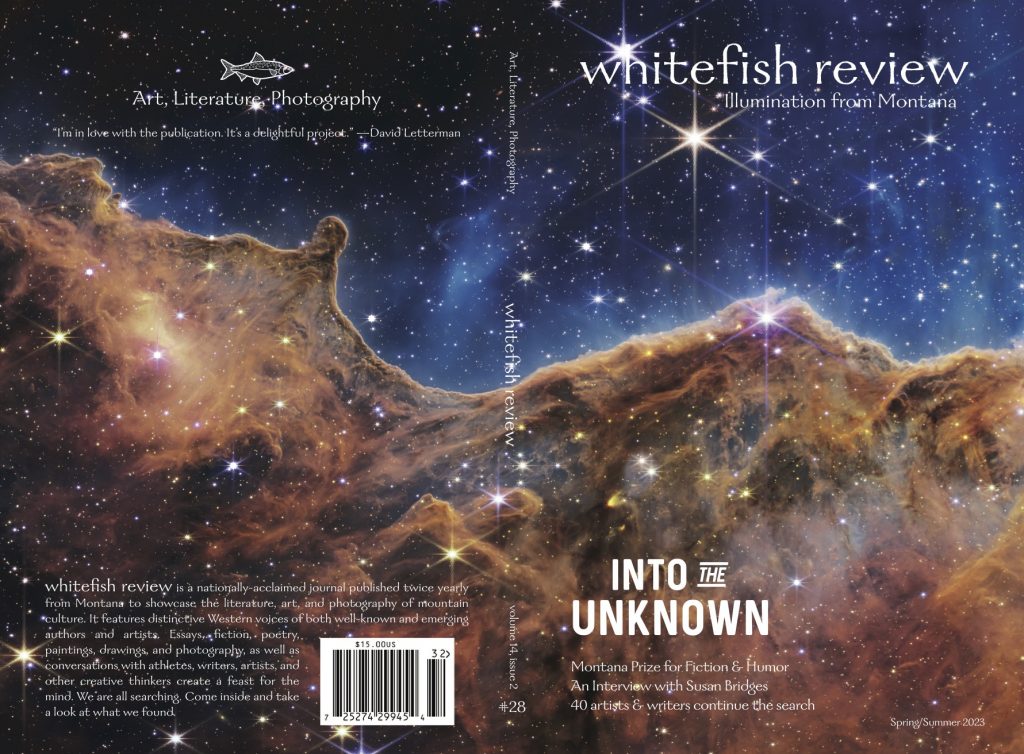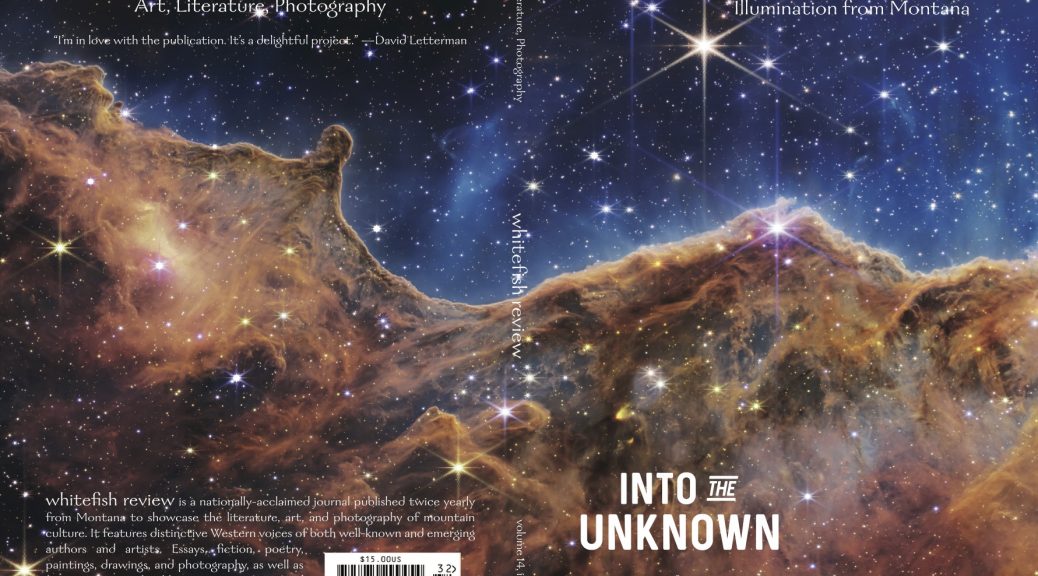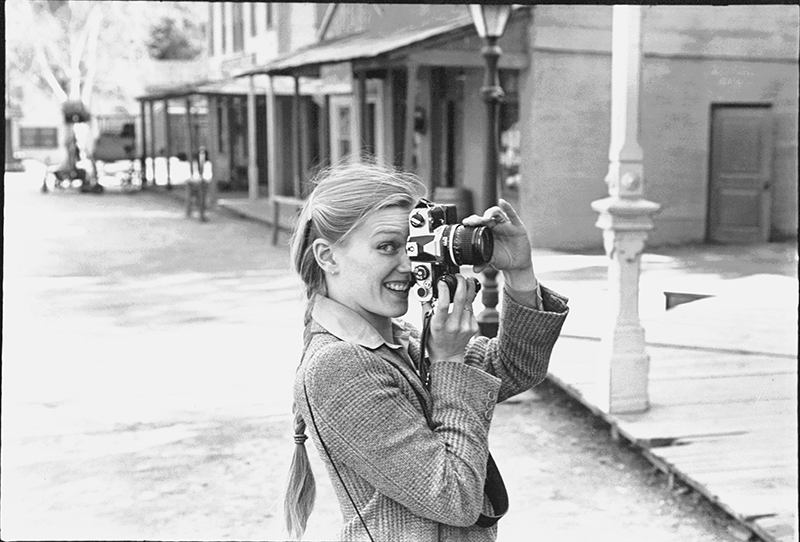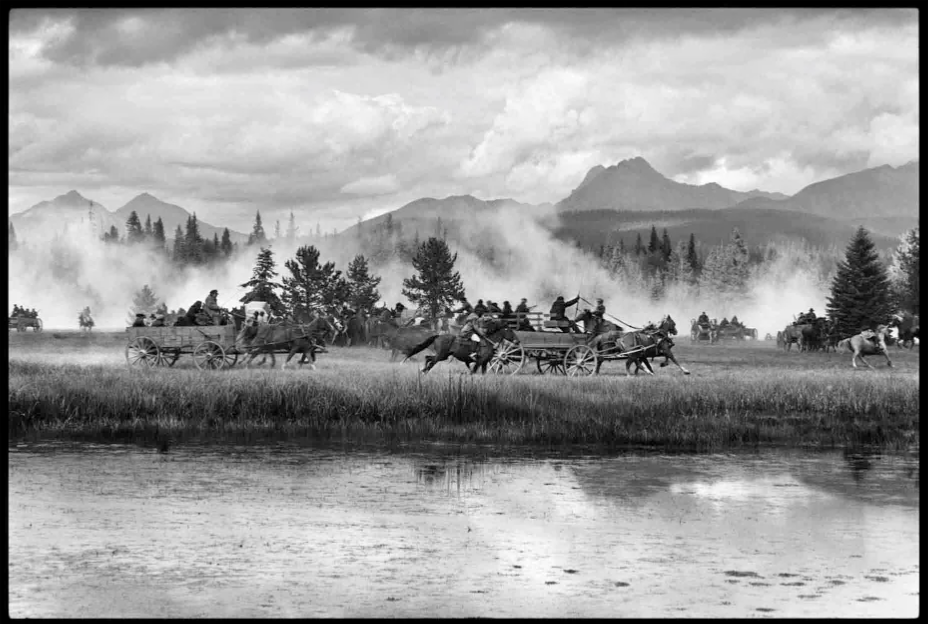Into the Unknown
by Brian Schott
Introduction to Issue #28
ORDER

The ground is shaking beneath me. It’s an earth tremor of sorts, but a deliberate scraping of the mantle as excavators and backhoes remove the old apartment complex across the street and dig a foundation for a new hotel outside our ramshackle office in downtown Whitefish.
I walk outside to snap a photo; I’ve been documenting the demolition for a few weeks now, and where once stood the old building is now just a field of rubble. A skiff of snow covers the ground this February morning. As I step onto the sidewalk, I slip and fall on the ice. I bounce up quickly and shake the snow from my pants.
“You all right?” comes the voice. It’s a construction worker who is shouting to me from his small excavator. I give him a thumbs up. Gratitude envelops me, simply because this stranger cared enough to ask if I was okay and we made a connection. It makes me feel better.
But really, things have not been okay with me. My emotional health has been at an all-time low. Some might call it depression, but I’ve come to recognize it as despair. I’ve been awash in anxiety, spinning my wheels through a deep fog. I am restless and burned out—the rubble of the building outside is what my body and soul feel like too much of the time these days. I see too much suffering all around.
And I literally can not see clearly! Within this past year, my eyes have grown weary. I now need reading glasses for work at the computer, or deciphering a price tag at the store. I took my good eye sight for granted for so long, and never realized what good fortune I had been given for more than 50 years of sharp eyes. It’s another lesson to count up all the good things.
There is a sheet of paper hanging on my office wall above my desk with blocks of time laid out in the weeks of a 90-year human life. (Credit to Tim Urban.) My highlighter pen has filled in 52 years of the blocks. There are faint pencil marks at age 60 (when my mom got Alzheimer’s), age 70 (when my dad got ALS), age 73, when my mom died, and age 75 when my dad passed away.
I am not messing around, says the universe. You are much more than halfway to dead.
While some people have commented that this life chart seems a little morbid, it helps remind me that each small block of time really adds up. What lies ahead is not known, but each present moment is vitally important to a good life, a meaningful way to live.
It might sound delusional, but picturing your own death and demise is a real practice for happiness. In college I took a course on death and dying and studied the old Greek women who would dig up the old bones of their ancestors, wash them, and return them to the earth. I had just been through the deaths of three high school friends during the spring of my senior year of high school, and I was broken up as I headed off to college. I thought studying death might help, and it did. Looking at death ups the ante. So I graduated, and went skiing.
I am not messing around, says the universe. You will die. There will not always be time to do the things you love.
While I have never thought of ending my life, I do a lot of thinking about what makes for a good life— a “happy” way to live. I generally come back to Socrates and his statement that “The unexamined life is not worth living.” And so I take a closer look inside. Get curious about my mood and the aches in my body and the excruciating feeling of sickness in my stomach when I lie in bed, worrying. I think back to my friend David James Duncan who once told me, “Worrying is like praying for what you don’t want.”
Our fiction editor Matt Holloway reminds me that this anxiety and despair are unnecessary and avoidable. We create our own suffering. It’s our choice on the inside how to exist. “When you change the inside, it changes the world around you,” says Matt. “If you don’t change the inside, you are not giving the world the love and light that you can.”
So I shift and pay attention to the delight where I can find it. I know without a doubt we need to embrace joy, beauty, and humor everywhere we go.
The journal you are holding in your hands is aimed at shifting your insides in some way, helping perhaps on your own journey. It is ultimately an exercise in “…the strange idea of continuous living despite/ the mess of us, the hurt, the empty,” as poet Ada Limón beautifully put it in her poem “Instructions on Not Giving Up.” As I write this sentence now in April, the final snow in the valley is just melting and soon the trees will turn green. The birds will return. Another spring is upon us.
For our 28th issue, we chose to take a look at the “unknown”… we’ve been spinning and emerging from the vortex of a pandemic and entering into a new space where unpredictability is high. We are feeling our way through the darkness—and artists and writers have a special way of helping us better find our way.
Art and literature get at the big questions we all ask about who we are, where we came from, where we are going, and what it all means. Science does this too. Artists and writers move us and create a connection to what it means to be human together. Here is a person who has known the same heartache that I have. In owning our grief and celebrating our joy, we can share a connection.
I’m back inside that world I’ve created inside myself, as spring emerges. The rage and sadness I often feel these days is hot. On so many levels, the conflicted and angry times we are living in are not what I imagined would reflect evolutionary progress—like time has not followed a predictable line in the course of human advancement. We are living in the most dangerous time, with respect to nuclear war, since the Cuban missile crisis. It has been said that since the Civil War, there has never been a more divisive time in our culture.
Some schools are back to banning books. States are limiting the rights of women. The earth continues to warm while corporations and governments stall and argue. These days it just feels like a big question mark of whether we are really heading for a big fall off the flat earth. Smoke from Canadian wildfires has filled the air around us in May. It drifted to the East Coast and got noticed by big media. Smoke-filled skies have just become normal for us out West. Gunshots mow down our brothers and sisters in regular waves. Seven were shot and two dead at a high school graduation in Richmond, Virginia. Our son graduated from high school last week. What kind of a world is he inheriting from us?
And don’t get me wrong. There is so much good happening too! Rick Bass has had a guitar built from a 300-year-old spruce that was cut down in a logging operation. Musicians will sing the songs of healing and speak for the old growth forests and their ability to store carbon as the guitar opens up. (Stay tuned for The Music Issue next!) I was honored to sit in the court room in Helena as young Montanan’s challenge the State on climate related health and hte mining of fossil fuels because it goes against the Montana Constituion for a right to a clean and healthful environment. When a new virus attacked us, our scientists responded in record time. We can now peer into the infant universe, 13 billion years back in time, with NASA’s James Webb Space Telescope on the continuing journey of understanding. Cancer treatments continue to advance, as well as care for mental health and addiction as our views shift away from stigma and toward healing.
And so here we are. Emerging from the collective trauma of a pandemic and into the great unknown where supercomputers can now write relatively good prose. It is a time of chaos and uncertainty—and I also hope a time when great men and women will emerge from the smoke. Will sharp minds grow as we contend with the extreme challenges of our fragmented society? I believe they will.
I also believe we have a crisis of connection in our society—and we need to move even more towards community. Our small town has cracks in the fabric and that worries me. If there was ever a time for a collective awakening, it is now. We can each do small, good things, every day—things that add up—and working together we can create real change.
Talking about our stories and what has hurt us and what has brought us joy is a way of coming together. Just telling our story or sharing our vision can help both the teller and the listener. Meaning created from the nothing. The work we are doing with the journal is a small attempt to make the world a little better. It is ultimately a form of connection.
The Greeks called it “divine madness”—a “gift” of sorts in terms of creativity that steps outside the norms of society. We welcome you to our crazy party! Artists, writers, and creative people are sensitive and often live with anxiety as we wrestle to produce meaning from the uncertainty of hurtling through space on a marble planet. We seek to communicate what we have been through on our journey so we don’t feel so alone.
Poets, artists, and writers make their private world public, and I am deeply honored to continue sharing what we have discovered. For this issue, my team reviewed 778 submissions from around the world and carved to the heart of this sculpture. 40 artists and writers explore the unknown and try to give it some structure that makes sense as we attempt to bring meaning to an impossible world.
My team has taken the privilege of reading and re-reading what all the creative souls have trusted us with, and the quality of work before you is a true assembly of talent, including prize winners in fiction and humor. The road to the publication of this issue has been particularly bumpy. But artists also know that if you set a course with too much clarity, the art will feel forced, and ultimately wither and perish.
While I get to take a lot of credit (and I also take the blame) for this madness, I am grateful to have surrounded myself with a group of friends who are good at the art of living and continue to share their wisdom with me as we try to make this unreasonable project work. I owe them my eternal gratitude for joining me.
With issue #28, we are also particularly happy to announce that we have now published over 1000 artists and writers across nearly 15 years. We have formed a creative community from 46 different states and 25 different countries. Whitefish Review also has represented the first piece of published work for 23 writers on these pages. An additional 38 writers or artists have been at the beginning of their journey, high school age or younger. It has been an honor to work with each of them as we continue to build this community of searchers.
Typically in an introduction like this, I might further explain what you are about to witness in the following pages. But as you enter this issue, I’m going to let you be surprised as you unwrap this gift. I’ll just say that while we explore the pressing issues of being human, which are often painful, we also cultivate levity and a sense of the light-hearted. It is good for our health to laugh.
Earlier this winter, the northern lights appeared late at night, distant bursts of radiation sent from explosions in the sun, traveling 90 million miles to light up the star-strung sky over Whitefish Lake. The greenish glow danced over the Whitefish Range, shifting into light purple, then explosive red toward the ink-black sky as the photons from the sun released the rare luminosity. I stood there with my wife and two sons, gazing at the wonders above us. People standing on the frozen lake shouted cries of joy that joined the dancing of light.
Shortly before his death three years ago, I asked my father if he believed there was a God. He said he didn’t know. But he shared this thought with me: “Given what we are at our best as humans, being able to love, seems to point beyond our world.”
As we seek meaning in this day-to-day, whether it is standing in line at the grocery store surrounded by strangers or staring in awe at nature with our family, the energy of the unknown falls back to love, and perhaps something beyond.
– Brian Schott
February 15, 2023 – June 21, 2023



